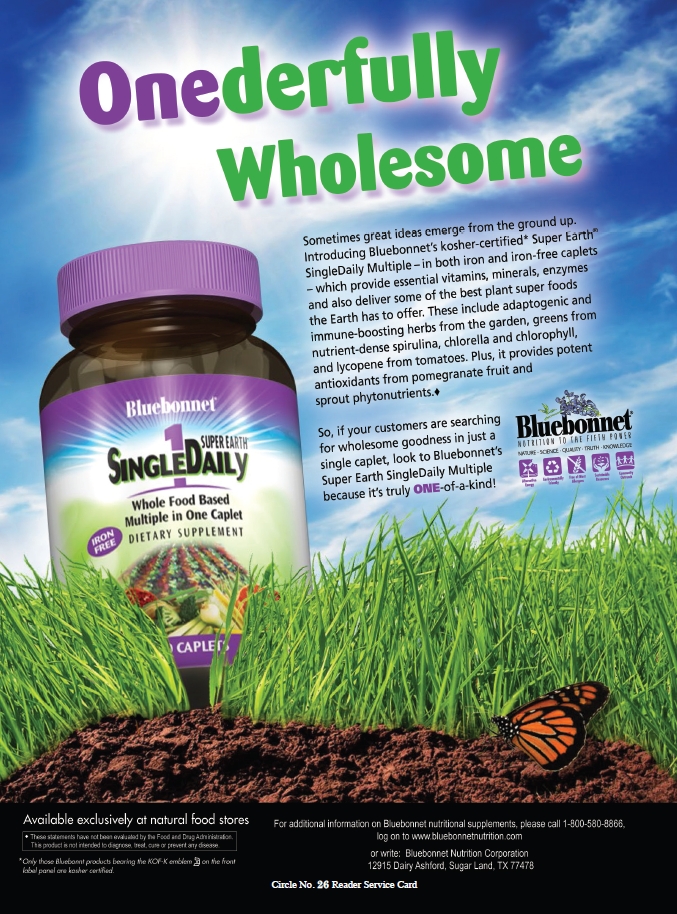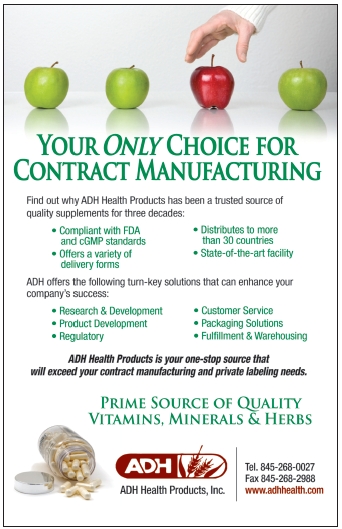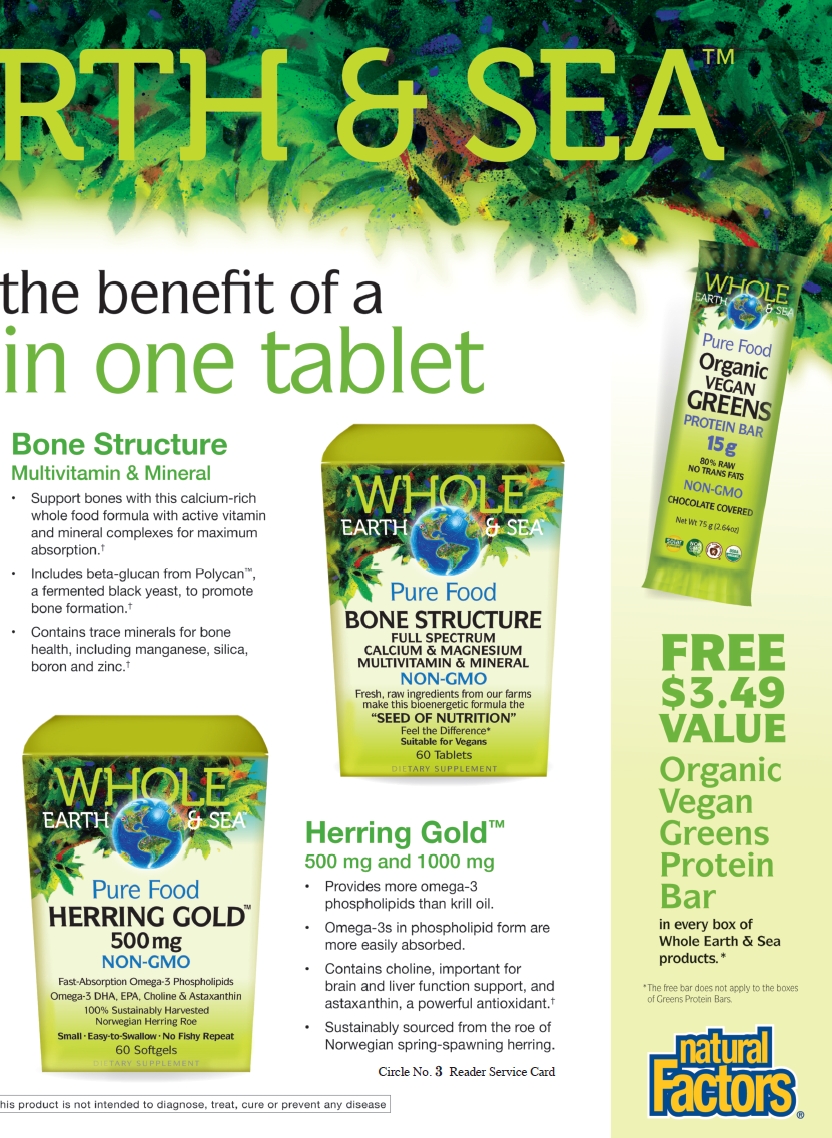In our October column celebrating Professor Fred A. Kummerow, Ph.D.’s 100th birthday, we discussed his early nutritional scientific achievements that have resulted in the saving of many thousands of people from premature death. We also discussed the deceitful maneuvering of data that resulted in many people believing that dietary cholesterol and saturated fat were factors in heart disease. For people to understand that the real culprits are trans fats and sugars, we had to show that the old beliefs were wrong. When we left off in our discussion with Dr. Kummerow, we were reviewing the true dietary contributors to heart disease. In this conclusion of our chat, we will discuss the clues that led Dr. Kummerow to elucidate that trans fats were the culprits, the resistance that this new concept faced and how to eliminate trans fats from our diets.
Dr. Kummerow is highly regarded for his efforts to uncover the dangers of trans fats and to remove dangerous man-made fats from our food supply. His life-saving nutritional efforts began with helping to wipe out the deadly pellagra epidemic in the United States.
Dr. Kummerow has published about 500 scientific articles, written two books, edited three books and contributed chapters on trans fat and cholesterol in heart disease to six books. He is still publishing scientific articles to this day.
Let’s pick up where we left off. I had just asked Dr. Kummerow, “Well, if it isn’t cholesterol and saturated fats, what could it be? You have long researched dietary cholesterol. How did you come to suspect that trans fat was the heart disease culprit instead? It certainly wasn’t obvious!”
Dr. Kummerow replied, “In 1957, I persuaded a hospital to give me samples of arteries from patients who had died of heart attacks. When I analyzed them I found that yes, the diseased arteries were filled with fat, but it was a specific kind of fat: trans fats” (26).
Well, he made that sound simple, but there is a whole lot more to this discovery than meets the eye. How does one recognize trans fats in arteries when so little was known about trans fats then and especially in human arteries? Let’s continue the story.
Passwater: In 1974, I attended your presentation at the annual meeting of the Federation of American Societies for Experimental Biology in Atlantic City. You and your colleagues presented your finding that trans fat presented a greater health risk than cholesterol-rich foods such as beef fat, butterfat and powdered eggs. In your studies, you fed the various fats to different groups of swine for eight months. Swine were used because they have aortas and hearts of similar size to humans. Your studies concluded that trans fats, which were added to margarine to make it firmer and more stable, were the most atherogenic (causing deposits in the arteries). The second worst group was the one fed an identical diet except that the calories of margarine were replaced with an equal number of calories from sugar. The animals fed the same diet except the margarine calories were replaced with butter calories had negligible changes in their arteries. The least artery disease was found in the group fed eggs. There were questions at first concerning the amount of essential fatty acids fed the swine, but your research was eventually published a few years later in the journal Artery (27).
This was the first time that I realized that trans fats were atherogenic. University scientists, government scientists and the food police continued to endorse trans fats as a healthier alternative to saturated fats. By 1984, food activists were pressuring fast food companies to discontinue frying food with safe, trans fats-free animal fats and tropical oils and switch to harmful trans fats-rich partially hydrogenated oils. They must be held accountable for their actions that exposed Americans to more heart disease-causing man-made trans fats. Industry groups and scientists married to the saturated fats theory continued to try to discredit your research, just as they tried to discredit the research of Mary Enig, Ph.D. But in 1990, a major study showed that trans fats increased risk factors for heart disease more than saturated fats did (28).
 Perhaps what should have been the final nail in the coffin of the saturated fat theory came in 1993 with the Nurses’ Health Study by Harvard scientists that concluded, “These findings support the hypothesis that consumption of partially hydrogenated vegetable oils may contribute to occurrence of CHD” (29).
Perhaps what should have been the final nail in the coffin of the saturated fat theory came in 1993 with the Nurses’ Health Study by Harvard scientists that concluded, “These findings support the hypothesis that consumption of partially hydrogenated vegetable oils may contribute to occurrence of CHD” (29).
George Mann, M.D., called for more research on the metabolic consequences of dietary trans fatty acids (30). He pointed out that the epidemic of heart disease followed the introduction of partially hydrogenated fats in food and they “impair lipoprotein receptors leading to hypercholesterolemia, atherogenesis, obesity and insulin resistance.”
Walter C. Willett, M.D., Dr.P.H. and Alberto Ascherio, M.D., Dr.P.H., commented in the American Journal of Public Health, “Federal regulations should require manufacturers…to greatly reduce or eliminate the use of partially hydrogenated vegetable fats” (31).
What advice do you offer regarding eating eggs and butter?
Kummerow: My advice regarding eating eggs and butter is that eggs contain all of the essential amino acids and butter contains the two essential fatty acids. Both are needed for a well-balanced diet. Eggs are one of nature’s most perfect foods. Besides the essential amino acids needed to build cells, whole eggs contain many vitamins and minerals.
Also, my advice is to eat less trans fat and more foods rich in magnesium, B6 and B12. Eat a balanced diet with a differing protein source every day, avoid all trans fats and don’t drink sodas.
Passwater: You mention magnesium, a much underrated nutrient. I remember your 1999 paper on magnesium reversing the artery calcification caused by trans fats (32).
Kummerow: Good. In that paper, my colleagues and I showed under what conditions trans fatty acids are a risk factor to the calcification of coronary arteries, which is the beginning of atherosclerosis, and if you translate this to the human diet, it means that adequate magnesium may modify the formation of calcified streaks.
Passwater: Getting back to eggs and butter, neither contain harmful trans fats. Please explain to our readers who may not be chemists just what is a trans fat.
Kummerow: Trans fats are formed during the process of converting soybean oil into margarine and vegetable shortening. During this process, trans fatty acids are formed. Natural oils are extracted from natural foods and then are converted into chemicals not found in nature by a process called hydrogenation. Hydrogenation adds hydrogen atoms to partially saturate the polyunsaturated fatty acids found in the natural oils, but in doing so, hydrogenation also converts many of the natural cis fatty acids into trans fatty acids.
Unsaturated fats contain double bonds in their  chemical structure whereas saturated fats do not. In chemistry, “trans” refers to identical atoms (in this case hydrogen atoms) on opposite sides of a double bond (in this case a double bond between two carbon atoms). “Cis” refers to the arrangement where the two identical atoms (hydrogen) are on the same side of the double bond.
chemical structure whereas saturated fats do not. In chemistry, “trans” refers to identical atoms (in this case hydrogen atoms) on opposite sides of a double bond (in this case a double bond between two carbon atoms). “Cis” refers to the arrangement where the two identical atoms (hydrogen) are on the same side of the double bond.
Vegetable oils contain several fatty acids, including the recognized “dietary essential” fatty acids (EFAs) linoleic acid (omega-6) and linolenic acid (omega-3). These two EFAs have double bonds at the 9,12 or 9,12,15 positions on the carbon chain. Partial hydrogenation changes the chemical structure of these EFAs. It causes the migration of the double bonds to other positions in the chain leading to a transformation to nine different trans isomers. This is one reason why the oils can become plasticized.
The partial hydrogenation process tampered with nature by introducing 14 different fatty acids that had no business being there.
Passwater: So, a wholesome dietary essential fat is changed by man into a different beast. The trans isomers give the fat a different molecular arrangement that converts oil into a solid, spreadable fat. The new trans configurations are more linear and not as space filling, so they have detrimental effects on membrane structure. Trans fats cause considerable harm in the body as we have discussed in previous columns with Dr. Enig dating back to 1993 (33–35). Trans fats cause various alterations to cell membrane fluidity and functions. Trans fatty acids disrupt enzymes in the membranes including delta-6 desaturase.
How do trans fats cause artery damage?
Kummerow: Trans fats become part of the endothelial cells that line the artery walls, just as they become part of all cell membranes. They cause inflammation and calcification of arterial cells—known risk factors for coronary heart disease (36). In the endothelial cells, trans fats interfere with the synthesis of prostacyclin, which is a compound needed in the arteries to keep the blood flowing (37). Trans fatty acids suppress prostacyclin production at levels found in commercial margarines, and processed foods labeled as trans-free could contribute to this effect if consumed in multiple servings or in addition to foods containing larger amounts of trans fats.
Neither cholesterol nor saturated fats are responsible for these changes. People who eat trans fats are not capable of keeping their blood flowing and can die a sudden death. They don’t die immediately after eating trans fats, but they die suddenly with a heart attack years later as the trans fats build up in the arteries. In 2011, the Centers for Disease Control and Prevention reported that 275,000 Americans died of sudden death. The U.S. Food and Drug Administration (FDA) is planning to remove these trans fatty acids from the diet. According to the FDA, they are present in more than 37,000 food items in the United States.
 Passwater: Trans fats certainly are ubiquitous. What are the main dietary sources of trans fats?
Passwater: Trans fats certainly are ubiquitous. What are the main dietary sources of trans fats?
Kummerow: Margarine and vegetable shortening, which is used in the baking of cookies, cakes and bread.
Passwater: When did trans fats begin to be significant in the American diet?
Kummerow: About 1920. They were introduced here just before 1910.
Passwater: The heart disease incidence grew after 1920, slowly at first, then reaching epidemic levels at a time when saturated fats and eggs were decreasing and trans fats were increasing (38). It’s difficult for this generation to realize that there were few heart attacks before 1920. Coronary thrombosis was first reported in 1896 by George Doc, M.D., as a rare event. The first description of a heart attack in a medical journal may have been in 1912 (39). When Paul Dudley White, M.D., who was one of the first cardiologists, was an intern at Massachusetts General Hospital in 1911, there was no Department of Cardiology.
Your early research findings were not appreciated by the cholesterol gang. I believe that in the mid-70s, you testified in Federal Trade Commission (FTC) hearings that eggs don’t cause heart disease, but that trans fats do. What happened to your research funding around this time?
Kummerow: I have never used university money. I lost my support from the National Institutes of Health (NIH) in 1979. I had received $200,000 a year from the NIH for my laboratory up until that point. Since I had started my research, I had received over $20 million for laboratory expenses mostly from the NIH. When I disagreed with Dr. Theodore Cooper, who was the was Deputy Assistant Secretary for Health, Department of Health, Education and Welfare (HEW) and past Director of the National Heart Institute (NIH), over the cholesterol issue at the FTC Hearings in 1975, the NIH funding stopped. I was lucky to obtain other funding of $200,000 a year from the Wallace Foundation for 28 years that ended in 2008 when Mr. Wallace died. From that point, I received funding from the Weston Price Foundation. That money has now been consumed by laboratory operational expenses. It costs $25,000 a month to keep my lab operational. If you know of any funding opportunities, I would be pleased to hear of them.
Passwater: After NIH decided to stop funding your research, millions of Americans were being exposed to harmful amounts of trans fats. Many developed heart disease. Dr. Enig, a follower of your research and an early opponent of having so much trans fatty acid in our diet spent parts of several summers in my laboratory. I witnessed some of the harassment she was subjected to by the establishment forces that tried to squelch the evidence against trans fats. You were certainly subjected to non-scientific pressures from vested interests, but you kept up your research. Eventually, you became involved with a lawsuit against the FDA to reduce the amount of trans fats in the food supply. How did this come about?
Kummerow: Indirectly. As I mentioned, I served as an expert witness at an FTC hearing in 1975, at which I stated that eggs were a good source of protein and I didn’t know, at the time, what caused heart disease. The only other witness that day, Dr. DeBakey, stated that on the basis of people he had performed bypass surgery on, he found that these patients had either high or low plasma cholesterol levels and needed the surgery.
I did not realize until years later when the entire  testimony was published that Theodore Cooper, M.D., head of the NIH, testified on May 30, 1975, that eggs contained cholesterol, cholesterol caused heart disease and therefore people should not eat eggs (40). Reading FTC’s final ruling makes it evident that only two witnesses testified that cholesterol was not the answer to heart disease. All of the other witnesses (the head of the NIH, many prominent physicians, among others) testified that cholesterol was the cause of heart disease (40). The final FTC ruling stated, “egg producers could not state that eggs was a good source of nutrition,” without also stating that cardiologists believed eating eggs was one cause of heart disease.
testimony was published that Theodore Cooper, M.D., head of the NIH, testified on May 30, 1975, that eggs contained cholesterol, cholesterol caused heart disease and therefore people should not eat eggs (40). Reading FTC’s final ruling makes it evident that only two witnesses testified that cholesterol was not the answer to heart disease. All of the other witnesses (the head of the NIH, many prominent physicians, among others) testified that cholesterol was the cause of heart disease (40). The final FTC ruling stated, “egg producers could not state that eggs was a good source of nutrition,” without also stating that cardiologists believed eating eggs was one cause of heart disease.
In 2009, I petitioned the FDA to ban trans fats. They are supposed to act on such petitions within six months. In 2013, I received a call from a San Diego attorney named Gregory Weston asking if I had received a response from FDA, after I had posted a docket on trans fat. Weston was concerned that after four years, I still had not received any reply from the FDA concerning this crucial matter, when the FDA was responding to other dockets concerning “white chocolate” in three months. So, Mr. Weston asked if he could represent me and we are still pushing forward to remove this deadly substance from the diet.
Passwater: It appears that the FDA is finally taking action to reduce trans fats in foods. When do you think they will publish actual regulations?
Kummerow: When they have answered all of the questions that were asked of them from consumers and the industry. The FDA will have to decide whether to ban trans fatty acids, or not.
Passwater: Is the proposed regulation sufficient?
Kummerow: It’s sufficient, if the FDA will ban all trans fat. Having a little here and there in foods adds up.
Passwater: Well, it looks as if people shouldn’t wait for the FDA to act. The agency could take years to finalize its ruling and FDA can weaken it after reading the industry comments. Readers can review the comments on “Tentative Determination Regarding Partially Hydrogenated Oils; Request for Comments and for Scientific Data and Information” at www.regulations.gov/#!documentDetail;D=FDA-2013-N-1317-0001.
What types of things can people do now to reduce their intake of trans fats?
 Kummerow: Look on the label of the food products they buy, and see to it that there’s no trans fat in the food product. If there is any amount of an ingredient called partially hydrogenated oil (PHO), the product contains trans fats. The largest amount of trans fats in the modern diet originates from fried and processed foods. According to the Trans Fat Task Force, up to 45% of the total fat in those foods containing artificial trans fats is formed by partially hydrogenating soybean oil. This is why we must work to remove all artificially created trans fats from the diet; consumers may be unaware of the amount of trans fat present in their food (41).
Kummerow: Look on the label of the food products they buy, and see to it that there’s no trans fat in the food product. If there is any amount of an ingredient called partially hydrogenated oil (PHO), the product contains trans fats. The largest amount of trans fats in the modern diet originates from fried and processed foods. According to the Trans Fat Task Force, up to 45% of the total fat in those foods containing artificial trans fats is formed by partially hydrogenating soybean oil. This is why we must work to remove all artificially created trans fats from the diet; consumers may be unaware of the amount of trans fat present in their food (41).
Passwater: An article in the July 2013 American Journal of Cardiovascular Disease pretty much summarizes the main aspects of your heart disease research (41). Please tell us a little about that paper.
Kummerow: I discussed my findings; namely, that atherosclerosis in modern human beings is based on the biochemistry, composition and structure of three of the five phospholipids in the cell membrane of the coronary arteries. I reported my findings indicate fried foods, powdered egg yolk, excess vegetable oils, partially hydrogenated vegetable oils and cigarette smoke are the greatest culprits in heart disease. Fried foods and powdered food substitutes are dietary sources of oxysterols, which alter the phospholipid membranes of our arteries in ways that increase the deposition of calcium, a key hallmark of atherosclerosis. Consumption of excess polyunsaturated fats stimulates the formation of oxysterols within the human body. Cigarette smoke and trans fats from partially hydrogenated vegetable oils interfere with fatty acid metabolism, leading to the interruption of blood flow, a major contributor to heart attacks and sudden death. In my opinion, many of these factors have been largely ignored by the medical establishment, which has focused instead on using drugs to lower cholesterol levels (41).
Passwater: This year, in Clinical Lipidology, you further explained that the oxysterols change the structure of the coronary arteries so that they are more susceptible to calcification and increase the synthesis of thromboxane which causes the blood to clot. The trans fatty acids inhibit prostacyclin synthesis, which prevents the blood from clotting (42). What about your personal diet?
Kummerow: I eat an egg every day and drink three glasses of whole milk. I also eat meat or some kind of protein at every meal and lot of fruits and vegetables.
Passwater: What do you eat for breakfast?
Kummerow: I eat an egg scrambled in butter, one tablespoon of oatmeal and wheat berries (which is cooked ahead of time and kept in the refrigerator or freezer), a tablespoon of plain yogurt, a small banana, four stewed prunes and a tablespoon of chopped nuts. I also have one cup of whole milk and a glass of water.
Passwater: Do you eat mostly natural foods?
Kummerow: I don’t eat processed or fried food. I eat fresh or frozen vegetables or fruit and meat that is baked or broiled.
Passwater: Your new book contains lots more practical advice on reducing the risk of heart disease. It can be purchased online from various booksellers such as Amazon and Barnes and Noble. It is called, Cholesterol Won’t Kill You, But Trans Fat Could.
Happy 100th birthday and thank you so much for your decades of  life-saving research. Let’s see now. After 70 years, your work has saved about 250,000 people from premature death from Pellagra. The number of premature deaths due to trans fats has been estimated to be between 30,000 and 325,000 and you have been warning us against this since 1957 (43). This represents the saving of hundreds of thousands more of us from premature deaths from the day that man-made trans fats are removed from the food supply. Not bad for a scientist who almost starved to death in Germany nearly 100 years ago. WF
life-saving research. Let’s see now. After 70 years, your work has saved about 250,000 people from premature death from Pellagra. The number of premature deaths due to trans fats has been estimated to be between 30,000 and 325,000 and you have been warning us against this since 1957 (43). This represents the saving of hundreds of thousands more of us from premature deaths from the day that man-made trans fats are removed from the food supply. Not bad for a scientist who almost starved to death in Germany nearly 100 years ago. WF
Dr. Richard Passwater is the author of more than 45 books and 500 articles on nutrition. Dr. Passwater has been WholeFoods Magazine’s science editor and author of this column since 1984. More information is available on his Web site, www.drpasswater.com.
References
26. P.V. Johnston, O.C. Johnson and F.A. Kummerow, “Occurrence of Trans Fatty Acids in Human Tissue,” Sci. 126 (3276), 698–699 (Oct 1957).
27. F.A. Kummerow, et al., “The Influence of Three Sources of Dietary Fats and Cho-Lesterol on Lipid Composition of Swine Serum Lipids and Aorta Tissue,”Artery 4: 360–384 (1978).
28. R. Mensink and M. Katan, “Effect of Dietary Trans Fatty Acids On High-Density and Low-Density Lipoprotein Cholesterol in Healthy Subjects,” New Engl. J. Med. 323 (7), 439–445 (1990).
29. W.C. Willett, et al., “Intake of Trans Fatty Acids and Risk of Coronary Heart Disease Among Women,” Lancet 341 (8845), 581–585 (1993).
30. G.V. Mann, “Metabolic Consequences of Dietary Trans Fatty Acids,” Lancet 343 (8908), 1268–1271 (1994).
31. W.C. Willett and A. Ascherio, “Trans Fatty Acids: Are the Effects Only Marginal?” Amer. J. Publ. Health 84 (5), 722–724 (May 1994).
32. F.A. Kummerow, Q. Zhou, and M.M. Mahfouz, “Effect of Trans Fatty Acids on Calcium Influx into Human Arterial Endothelial Cells,” Am. J. Clin. Nutr. 70 (5), 832–838 (1999).
33. R.A. Passwater, “Health Risks from Processed Foods and Trans Fats,” WholeFoods Mag. 46–51 (Nov 1993), www.drpasswater.com/nutrition_library/enig1_interview.html.
34. R.A. Passwater, “Health Risks from Processed Foods and Trans Fats,” WholeFoods Mag. 52-56 (December 1993), www.drpasswater.com/nutrition_library/enig2_interview.html.
35.R .A. Passwater, “Health Risks from Processed Foods and Trans Fats,” WholeFoods Mag. 47-51 (January 1994), www.drpasswater.com/nutrition_library/enig3_interview.html.
36. F.A. Kummerow, “The Negative Effects of Hydrogenated Trans Fats and What to Do about Them,” Atherosclerosis 205 (2), 458–465 (2009).
37. F.A. Kummerow, et al., “Effects of Trans Fats on Prostacyclin Production,” Scand. Cardiovasc. 47 (6), 377–382 (2013).
38. A.H.T. Robb-Smith, The Enigma of Heart Disease (Chicago, IL, Year Book Medical Publishers, 1967).
39.J.B. Herrick, “Clinical Features of Sudden Obstruction of the Coronary Arteries,” J. Amer. Med. Assoc. 64:2015–2020 (1912).
40. National Commission on Egg Nutrition vs Federal Trade Commission. Docket 8987 (1977). www.ftc.gov/os/decisions/docs/vol88/FTC_VOLUME_DECISION_88_(JULY_-_DECEMBER_1976)PAGES_84-205.pdf.
41. F.A. Kummerow, “Interaction between Sphingomyelin and Oxysterols Contributes to Atherosclerosis And Sudden Death,” Am. J. Cardiovasc. Dis. 3 (1), 17–26 (2013).
42. F.A. Kummerow, “Two Lipids in the Diet, Rather Than Cholesterol, Are Responsible for Heart Failure and Stroke,” Clin. Lipidol. 9:2; 189-204 (April 2014).
43. http://www.zoominfo.com/p/Fred-Kummerow/15324839, accessed Oct. 7, 2014.
Published in WholeFoods Magazine, November 2014












